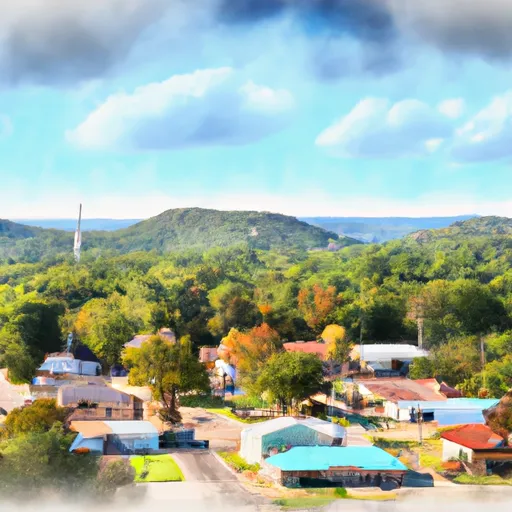-
 Snoflo Premium
Snoflo Premium
Get unlimited access to all our content
With no Ad interruptions! - Start Your Free Trial Login with existing account
Mountain-Home
Eden Index
Climate
8.2
•
Recreation
3.5
•
Community
3.0
•
Safeguard
5.3/10

Mountain Home, Arkansas is a charming city located in Baxter County, nestled amidst the scenic beauty of the Ozark Mountains. The region experiences a humid subtropical climate, characterized by hot, muggy summers and mild winters. Summers are typically sunny with temperatures averaging in the 80s°F, while winters see temperatures ranging from the 30s°F to 50s°F.
The city is blessed with numerous water bodies, including the renowned Bull Shoals Lake and the White River, making it a haven for aquatic recreation. Bull Shoals Lake, covering approximately 45,000 acres, offers opportunities for boating, fishing, swimming, and water sports. The White River is famous for trout fishing, attracting anglers from near and far.
The picturesque landscape surrounding Mountain Home provides a plethora of outdoor activities. Exploration of the Ozark National Forest offers hiking, camping, and wildlife viewing opportunities. The nearby Norfork Lake provides additional fishing and boating options. Golf enthusiasts can enjoy the city's renowned golf courses, while nature lovers can explore the trails of Hickory Park and Cooper Park.
Overall, Mountain Home, Arkansas offers a pleasant climate, abundant water resources, and diverse outdoor recreation opportunities, making it an ideal destination for nature enthusiasts and outdoor adventurers.
What is the Eden Index?
The Snoflo Eden Index serves as a comprehensive rating system for regions, evaluating their desirability through a holistic assessment of climate health, outdoor recreation opportunities, and natural disaster risk, acknowledging the profound impact of these factors on livability and well-being.
Climate Health Indicator (CHI): 8.2
Mountain-Home receives approximately
1160mm of rain per year,
with humidity levels near 81%
and air temperatures averaging around
15°C.
Mountain-Home has a plant hardyness factor of
7, meaning
plants and agriculture in this region tend to thrive during the non-winter months.
By considering the ideal temperature range, reliable water supplies, clean air, and stable seasonal rain or snowpacks, the Climate Health Indicator (CHI) underscores the significance of a healthy climate as the foundation for quality living.
A healthy climate is paramount for ensuring a high quality of life and livability in a region, fostering both physical well-being and environmental harmony. This can be characterized by ideal temperatures, reliable access to water supplies, clean air, and consistent seasonal rain or snowpacks.
Weather Forecast
Streamflow Conditions
Upper White
Area Rivers
Upper White
Snowpack Depths
Upper White
Reservoir Storage Capacity
Upper White
Groundwater Levels
Recreational Opportunity Index (ROI): 3.5
The Recreational Opportunity Index (ROI) recognizes the value of outdoor recreational options, such as parks, hiking trails, camping sites, and fishing spots, while acknowledging that climate plays a pivotal role in ensuring the comfort and consistency of these experiences.
Access to outdoor recreational opportunities, encompassing activities such as parks, hiking, camping, and fishing, is crucial for overall well-being, and the climate plays a pivotal role in enabling and enhancing these experiences, ensuring that individuals can engage in nature-based activities comfortably and consistently.
Camping Areas
| Campground | Campsites | Reservations | Toilets | Showers | Elevation |
|---|---|---|---|---|---|
| Jimmie Davis State Park | None | 232 ft | |||
| Bankston Camp Complex | 15 | 218 ft | |||
| Twin Lakes Military - Camp Beauregard | None | 95 ft | |||
| Stuart | 8 | 153 ft | |||
| Indian Creek Recreation Area | None | 105 ft | |||
| Highway 472 Camp | 15 | 154 ft | |||
| Rapides Coliseum | None | 78 ft | |||
| Lake DArbonne State Park | None | 191 ft | |||
| Loran Site Complex | 30 | 230 ft | |||
| Pearson Camp Complex | 25 | 154 ft |
Nearby Ski Areas
Catastrophe Safeguard Index (CSI):
The Catastrophe Safeguard Index (CSI) recognizes that natural disaster risk, encompassing floods, fires, hurricanes, and tornadoes, can drastically affect safety and the overall appeal of an area.
The level of natural disaster risk in a region significantly affects safety and the overall livability, with climate change amplifying these risks by potentially increasing the frequency and intensity of events like floods, fires, hurricanes, and tornadoes, thereby posing substantial challenges to community resilience and well-being.
Community Resilience Indicator (CRI): 3.0
The Community Resilience Indicator (CRI) recognizes that education, healthcare, and socioeconomics are crucial to the well-being of a region. The CRI acknowledges the profound impact of these elements on residents' overall quality of life. By evaluating educational resources, healthcare accessibility, and economic inclusivity, the index captures the essential aspects that contribute to a thriving community, fostering resident satisfaction, equity, and social cohesion.

